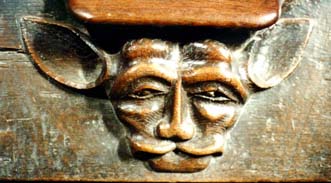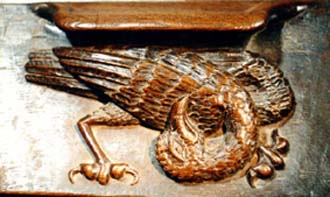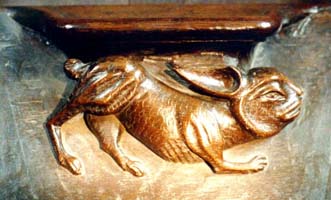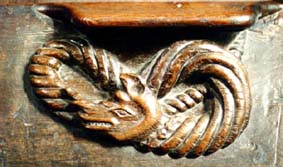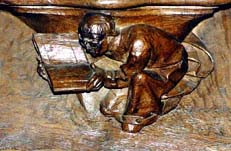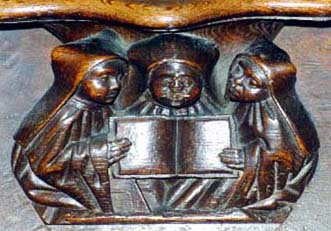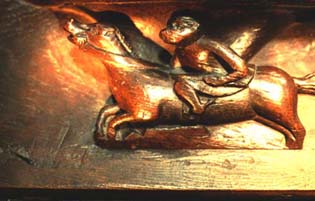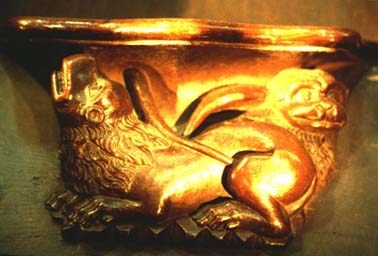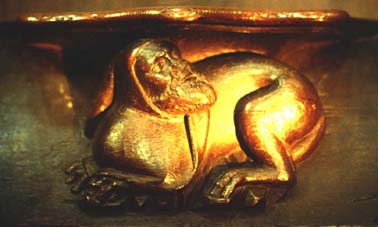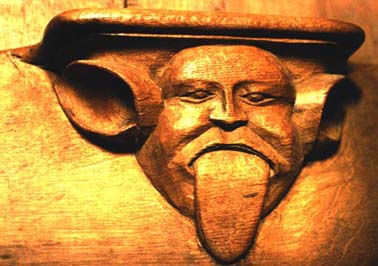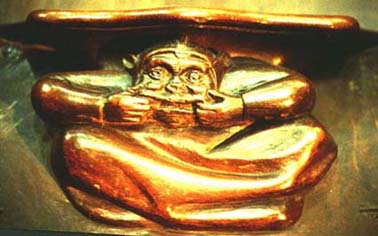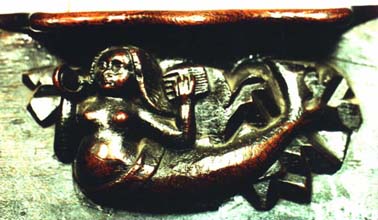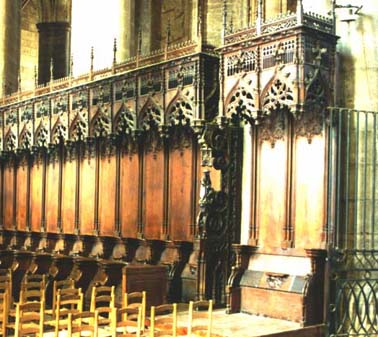
Series of wooden choir stalls can be found in the chancel, in front of the apse (in the choir), in many European churches, cathedrals and monastery chapels. It is not clear when or where such wooden stalls first appeared, but we do know that their early forerunners were stone benches. These were placed on the apse walls on either side of the pulpit and reserved for the church elders. Traces of this arrangement remain in some cathedrals in the south of France. The earliest surviving wooden stalls in France are dated to the thirteenth century. Wood was preferred on account of its insulating qualities and because wooden stalls could be easily installed after the construction was already finished.
Choir stalls are made of a variable number of stalls joined together at the armrests, at the backs and sometimes at the seat base as well. Each individual stall comprises back, armrests and a hinged seat-bracket that can be raised and lowered, unlike the fixed older stone slabs. The bracket is sanded smooth on the top for comfort, while its underside is carved. This carving, which comes into view when the seat is raised, is known as a Misericord.
The stalls are sometimes arranged in parallel rows on either side of the apse, or in a U-configuration with the open end facing the central altar to the east. When there is more than one row, the backs of the stalls in the back row are high, leaning against the wall and decorated, while those of the inner rows are low (so as not to obstruct the view) and mostly undecorated. The external panels at the row ends are also decorated and generally display greater dignity of subject matter and handling. A wide variety of themes are represented, from religious scenes, such as the Annunciation, saints and monks, to vegetal decorative motifs interspersed with fantastic animals. The end-panel carvings are often richer than those of the misericords and also surpass them in the thematic hierarchy. The end-panels of the lower series are also carved and occasionally surmounted by three-dimensional sculpture depicting saints, human secular figures and animals. In the lower series the continuity is broken by gaps allowing passage to the high stalls. The armrests are carved in high relief, offering a sort of grip. This carving is thus functional as well, in being used to pull oneself up from the stall.
Worshippers were denied access to many areas in the church. The choir area was reserved for the high-ranking clerics devoting long hours to meditation. It was walled-off by a stone partition (choir screen) to prevent entry by visitors or worshippers, as well as serving as a barrier against chilly drafts. Most of these partitions had already disappeared by the seventeenth century, as a result of theological clashes or the ravages of war and fire.
The term "misericord",
appropriately derived from the Latin misericordia, meaning compassion
or mercy refers to the seven acts of compassion required of the
devout. The term also indicated measures of relief from
the strictures imposed on monks, such as exemption from fasting,
and hence it came to be applied to that part of the stall designed
to let worshippers take the weight off their feet during the long
hours of prayer and ritual.
This is a survey of 14 photos of Misericords from south of France.
Misericords links:
Prof. Elaine Block - Misericordia International
The Hull University, England


